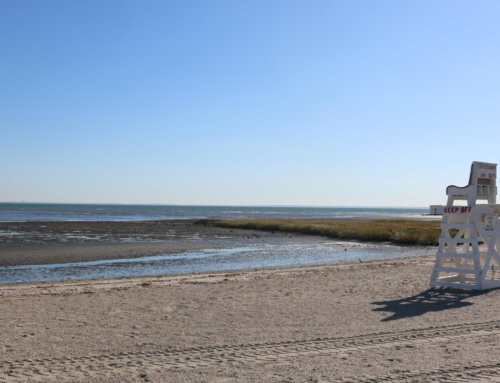Securing a Safe and Healthy Future for Shellfish in Long Island Sound
As the 2018 summer season heats up, shellfish are already experiencing difficult conditions across Long Island Sound. Biotoxins produced by harmful algae have been detected in Long Island’s harbors and bays; a reminder that, to protect our delicious local shellfish, there is an urgent need to reduce nutrient pollution in streams, rivers and coastal water bodies.
The Environmental Protection Agency (EPA) set a goal to reopen and upgrade 5% (about 17,000 acres) of Long Island Sound’s restricted or closed shellfishing areas by 2035. Unfortunately, this target is behind schedule, with shellfish beds recently downgraded in New York due to water quality concerns, and certain areas closing in Connecticut because they are difficult to frequently test and monitor.
Shellfish across Long Island Sound are affected by two main issues, naturally occurring pathogens and harmful algal blooms (HABs). Pathogens—disease causing bacterial or viral microorganisms—are often delivered to coastal water bodies through stormwater drains and pipes. As a result, communities across the Sound regularly close shellfish beds following a heavy rain to protect people from harvesting potentially contaminated seafood.
HAB’s, in contrast, are caused by nitrogen pollution in the coastal waters. Nitrogen from the atmosphere and from fertilizers and wastewater on the landscape makes its way into streams, groundwater, rivers and eventually the harbors and bays of Long Island Sound. Too much nitrogen in these coastal waters can fuel the growth of harmful, neurotoxin-producing algae that contaminates shellfish. And data compiled by The Nature Conservancy and Stony Brook University show these harmful blooms have occurred across Long Island from 2013-2017.
According to the New England Interstate Water Pollution Control Commission (NEIWPCC), the occurrence of toxic algae blooms is on the rise in the Northeast in both freshwater and marine environments. Algae blooms are fueled by nitrogen pollution entering water bodies, but they are also influenced by conditions enhanced by climate change. For example, the EPA suggests that warming temperatures, increased carbon dioxide and increased rainfall will create conditions to further fuel these blooms, which can seriously threaten public health.
Direct contact with toxic algae can cause skin rashes, gastrointestinal and respiratory disease, and liver damage. Consuming shellfish contaminated with biotoxins can result in paralytic shellfish poisoning (PSP) and amnesic shellfish poisoning (ASP), both potentially fatal conditions that can cause major damage to the brain. In early May 2018, 1,600 acres of shellfish beds of Shinnecock Bay were closed due to the emergence of red tide. This June, brown tide returned for a sixth year to the Great South Bay, and this algae continues to hinder the recovery of the region’s shellfish industry, having already caused a 90% decline in clam landings since 1985. Similarly, in late May Huntington Harbor tested positive for marine biotoxins, resulting in 400 acres of closures in harvest areas. The biotoxins lasted for almost a month, but conditions eventually improved and the harvest areas were reopened.
To secure safe and healthy shellfish resources for future generations we must reduce nitrogen pollution now. There are clear, proven solutions available and they include: addressing failing sewage infrastructure, upgrading outdated septic systems, eliminating or reducing fertilizer use and capturing stormwater during intense rain events. Together, these steps can help keep our waters clean and healthy for the recreational and commercial harvest of shellfish, and preserve this important part of our coastal economy and way of life.
To stay informed about water quality across Long Island Sound and what you can do to make a difference, subscribe to our mailing list. For more information about shellfish closures in New York, visit the New York State Department of Environmental Conservation’s (NYSDEC) Temporary Closures page. In Connecticut, the public should call their town Shellfish Commission or Health Department for more information. The contact information for shellfish harvesting in Connecticut towns are listed here.



